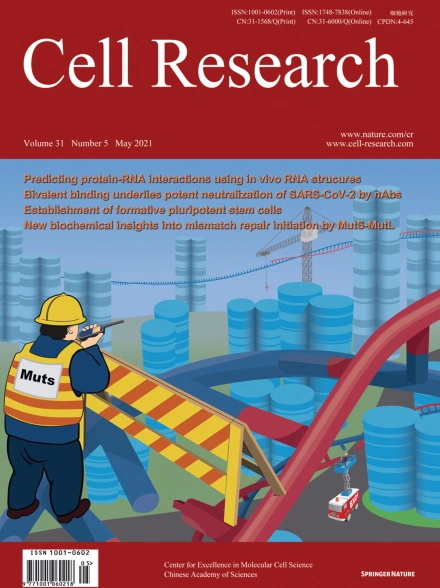
Advanced Search
Submit Manuscript
Advanced Search
Submit Manuscript
Volume 31, No 5, May 2021
ISSN: 1001-0602
EISSN: 1748-7838 2018
impact factor 17.848*
(Clarivate Analytics, 2019)
Volume 31 Issue 5, May 2021: 526-541 |
Formative pluripotent stem cells show features of epiblast cells poised for gastrulation
Xiaoxiao Wang1 , Yunlong Xiang2 , Yang Yu1 , Ran Wang3 , Yu Zhang4 , Qianhua Xu4 , Hao Sun1 , Zhen-Ao Zhao1 , Xiangxiang Jiang1 , Xiaoqing Wang1 , Xukun Lu1 , Dandan Qin1 , Yujun Quan1 , Jiaqi Zhang1 , Ng Shyh-Chang1 , Hongmei Wang1 , Naihe Jing3,5 , Wei Xie4,* , Lei Li1,*
1State Key Laboratory of Stem Cell and Reproductive Biology, Innovation Academy for Stem Cell and Regeneration, Beijing Institute for Stem Cell and Regenerative Medicine, Institute of Zoology, University of Chinese Academy of Sciences, Chinese Academy of Sciences, Beijing 100101, ChinaThe pluripotency of mammalian early and late epiblast could be recapitulated by naïve embryonic stem cells (ESCs) and primed epiblast stem cells (EpiSCs), respectively. However, these two states of pluripotency may not be sufficient to reflect the full complexity and developmental potency of the epiblast during mammalian early development. Here we report the establishment of self-renewing formative pluripotent stem cells (fPSCs) which manifest features of epiblast cells poised for gastrulation. fPSCs can be established from different mouse ESCs, pre-/early-gastrula epiblasts and induced PSCs. Similar to pre-/early-gastrula epiblasts, fPSCs show the transcriptomic features of formative pluripotency, which are distinct from naïve ESCs and primed EpiSCs. fPSCs show the unique epigenetic states of E6.5 epiblast, including the super-bivalency of a large set of developmental genes. Just like epiblast cells immediately before gastrulation, fPSCs can efficiently differentiate into three germ layers and primordial germ cells (PGCs) in vitro. Thus, fPSCs highlight the feasibility of using PSCs to explore the development of mammalian epiblast.
https://doi.org/10.1038/s41422-021-00477-x